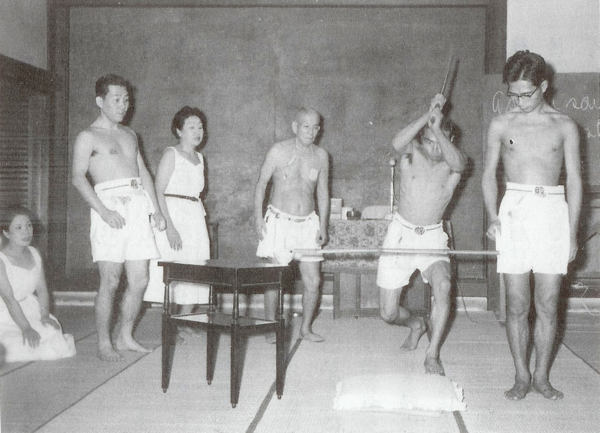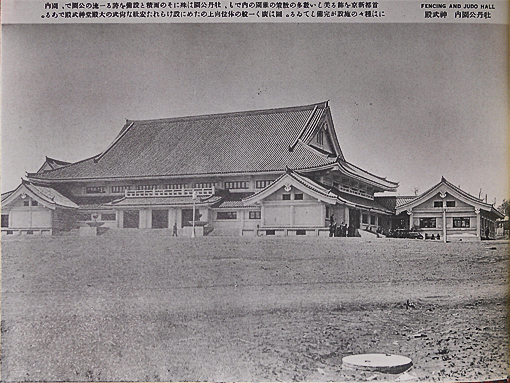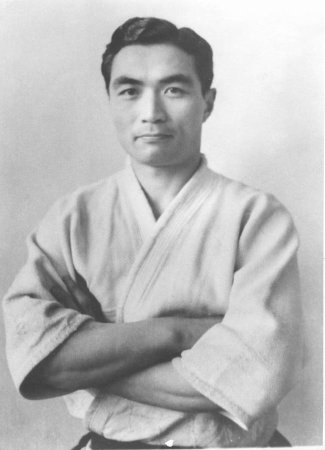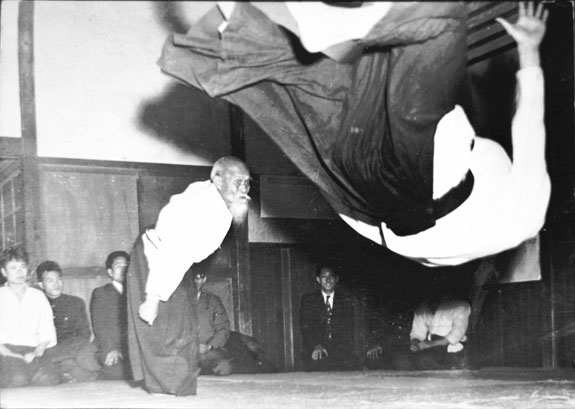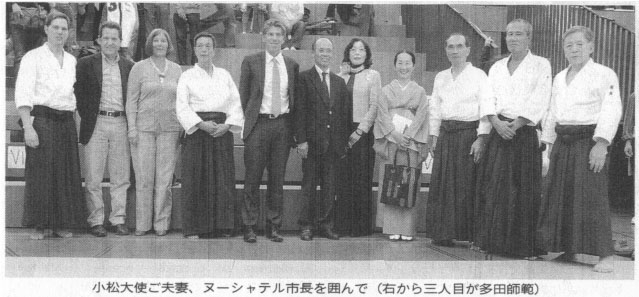
Hiroshi Tada (3rd from right) at the 40th Anniversary of Aikikai Switzerland
With the Mayor of Neuchâtel and Ambassador and Mrs. Ichiro Komatsu
From Aikido Shimbun number 585, published October 10th 2009
Japanese Budo and Kata Training
This is part 4 of the English translation of an interview in Japanese with Hiroshi Tada. You may want to read Part 1 first to learn about Tada Sensei’s samurai ancestry and his encounters with Shotokan Karate Founder Gichin Funakoshi, Part 2 to learn about how Hiroshi Tada met Shin-Shin Toitsu-Do Founder Tempu Nakamura, and Part 3 to learn Tada Sensei’s thoughts on “telepathy” training.
You may also be interested in “The Day I Entered Ueshiba Dojo“, in which Hiroshi Tada recounts his first encounter with Aikido Founder Morihei Ueshiba O-Sensei.
You may notice that the tone of the interview is quite conversational. This is the way that it appears in the original Japanese – the original was not heavily edited, with the result being that the natural conversational tone was preserved. However, this also means that the discussion is sometimes less focused then a more heavily edited interview might be. (more…)


